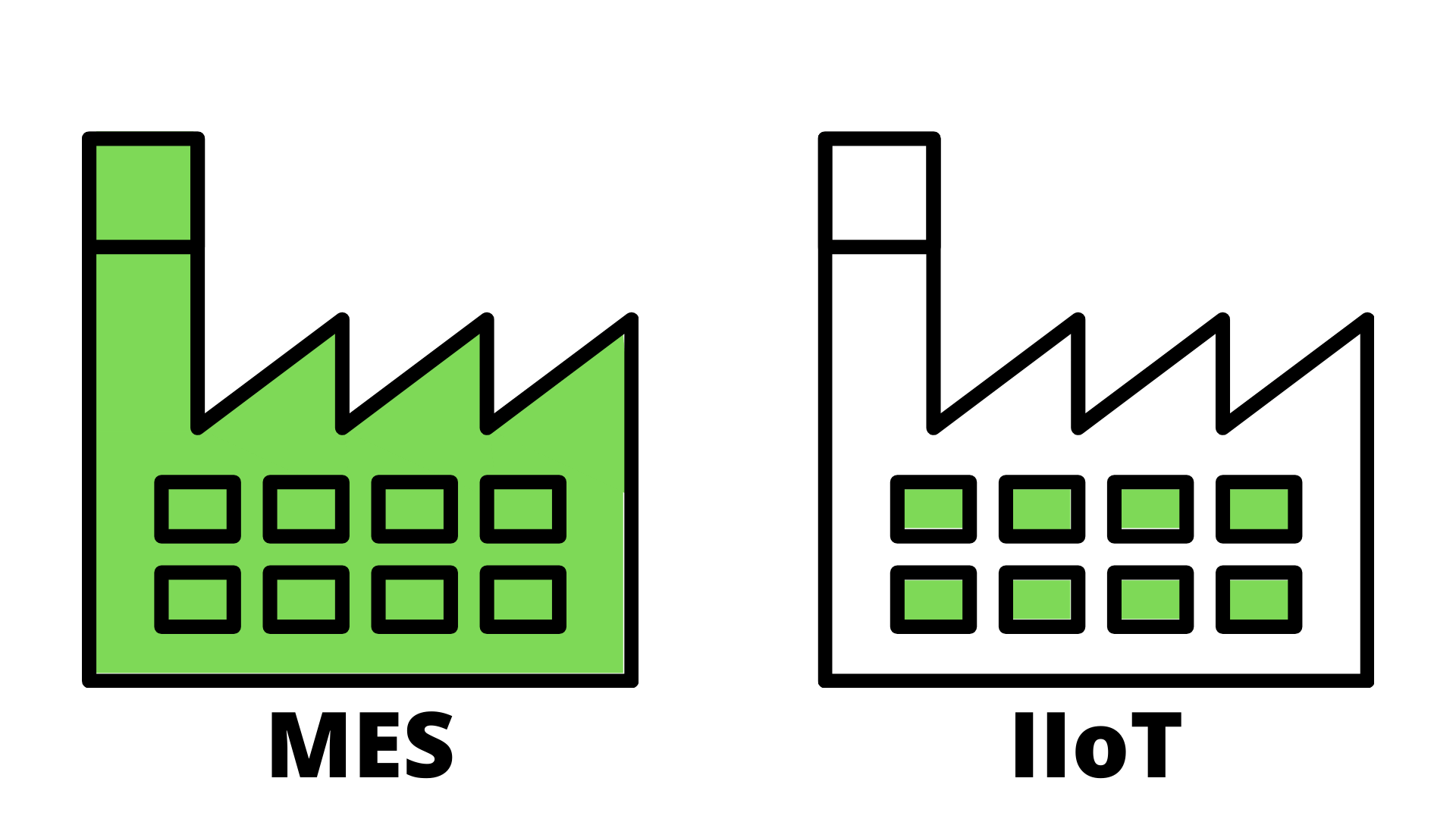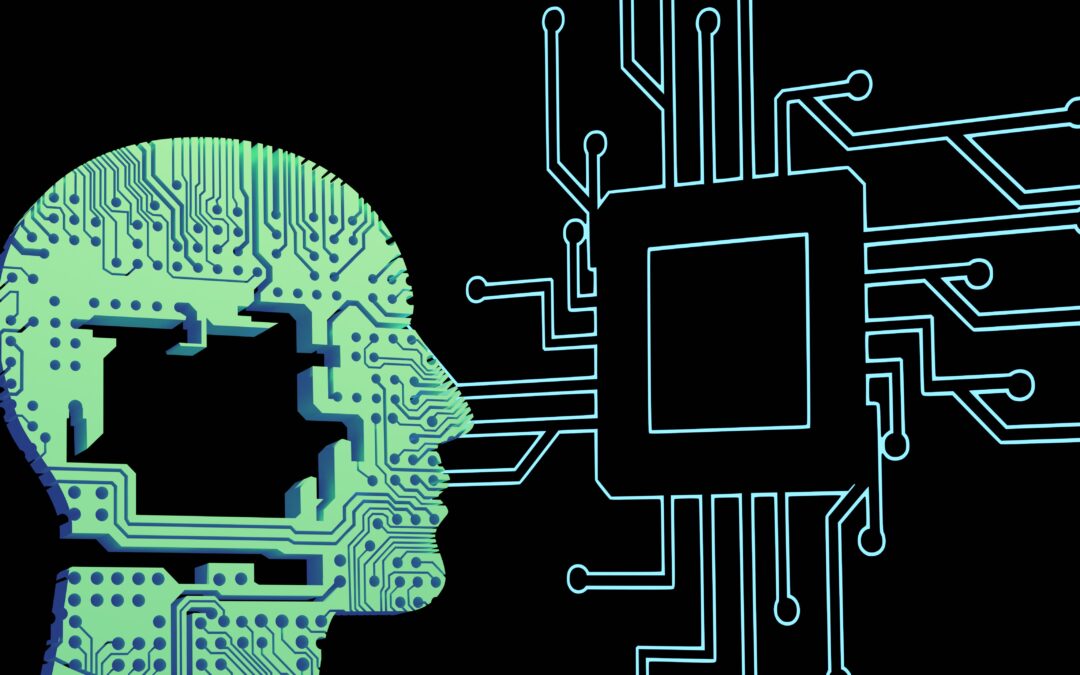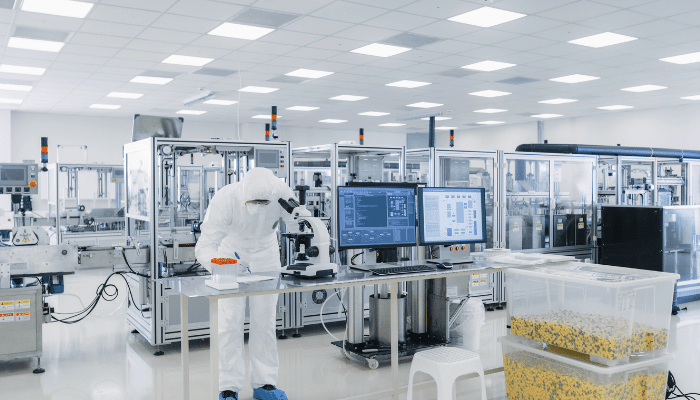MES vs IoT. Two manufacturing solutions that are equipped with the ability to greatly increase plant floor production, and eliminate inefficiencies. Each of these two types of solutions are great at what they do. However, they are not exactly interchangeable. There are many key functions that differentiate these two solutions. So, what makes them different? How are they the same? Which is the more complete solution? Which is best for manufacturers today?
Throughout the following parts of this article, we will dive deeper into this topic and answer each of these questions.
IoT / IIoT
First off, let’s define the difference between IoT and IIoT. Keeping it simple, IoT stands for “Internet of Things” and IIoT stands for “Industrial Internet of Things.” Generally, these two are the same thing, and the two acronyms are interchanged frequently. The difference between the two is just that IIoT is used in a more specific (industrial) setting. Consequently, IIoT will also generally put a stronger emphasis on security standards.
IIoT creates a connected factory. An IIoT solution uses sensors to create a network within the machines on the plant floor. This creates a platform for machines and operators to seamlessly communicate real-time data between each other. IIoT streamlines the process of gathering, analyzing, and sharing machine data.
Implementing an IIoT system is a huge step for manufacturers who are still manually recording machine data with pen and paper, or maybe a whiteboard reporting system. IIoT is much more than just a quicker way to gather data, it gives you access to big data– data that is simply not an option when recording manually. It also contextualizes data in an easy-to-read format in real-time to make quick decisions on the plant floor and keep moving.
Reasons Why Implementing IIoT is Essential for Companies Who are Still Manually Gathering and Reporting Machine Data
- Real-time contextualized data for quick data-driven decision making on the plant floor
- Operators can focus on their manufacturing process instead of continuously taking time to record basic data
- Accurate data pulled directly from the source of truth (the machines) – no room for human error
- Machine learning – pick up on trends and tendencies to reduce machine downtime and stoppages
- Big Data – Ability to utilize deep sets of data to improve production efficiency
- Improved control and monitoring
- Seamless communication between people and machines
- Ability to quickly find inefficiencies to reduce scrap and operating costs
MES
MES stands for manufacturing execution system. Between IoT and MES, IoT is generally the term the majority of people have heard before, and are more aware of. This might come as a surprise because MES has been around for over 30 years at this point, while IIoT has only gained popularity in the last decade or so.
There are 11 core functions of an MES defined by ISA-95.
- Data Acquisition
- Scheduling
- Personnel Management
- Resource Management
- Flow of Products and Batches
- Product Traceability and Genealogy
- Quality Control
- Process Management
- Performance Analysis
- Document Management
- Maintenance Management
You could argue that many of these MES functions could be handled with a different system, maybe a cheaper system. This is true, there are many different products and solutions that can tackle 1 or 2 of these functions. The value of an MES solution is that it’s one central solution that can efficiently fulfill your needs in each of these areas. An MES pulls data from everywhere on the plant floor and communicates information back and forth with an ERP system.
An MES will track the entire manufacturing process from start to finish. It receives scheduling and order information from the ERP, and starts tracking production from raw material to finished product.
MES vs IoT: Similaritites
At this point, you can likely determine what IIoT and MES systems have in common. We could go on and on listing each specific detail shared between these two solutions. MES and IIoT are both modern solutions for better manufacturing. Each of these systems revolve around real-time data to improve plant-floor efficiency throughout the manufacturing process. Both solutions also put a strong emphasis on reducing downtime and unnecessary stoppages.
Both solutions have the same overall goal, so what makes them so different? Which one is the best option for you?
MES vs IoT: Differences
I’m not going to waste any time here, this is what the entire article has been leading up to. IIoT is one aspect of an MES solution. an IIoT system is an extremely efficient solution for monitoring machines on the plant floor, pulling machine data, and making quick adjustments. However, even though the actual machines and equipment are such a large and vital part of the plant floor and manufacturing process, there are many more factors involved aside from these.
Referring back to the 11 functions I mentioned previously, an IIoT system falls into those functions with data acquisition and performance analysis. Although, a complete MES solution covers many more areas than this- Scheduling, Personnel management, resource management, maintenance management, document management, etc. This is why an MES is a complete solution covering everything within the 4 walls of the plant floor.
The Best Plant Floor Solution for Manufacturers Today
Manufacturing companies can be broken down into two main sections. Section 1 is the back office. In the back office you have IT, the sales team, it’s where you receive customer orders, schedule them, and send that information down to the plant floor. The ERP system revolutionized the back office. But, how does this information get to the plant floor? Typically, on a traveler- a piece of paper with all of the order information that gets passed around from station to station until the job is complete.
Section 2 is the plant floor. MES revolutionizes the plant floor. Instead of that piece of paper being passed around, an MES system will track every process, machine, person, and material on the plant floor. A complete solution covering all aspects of the manufacturing process.
So, what is the final answer? MES vs IoT? The answer is MES, but both with IoT too. IoT tracks and handles a few very important functions, mostly with machines. With that being said, remember that IoT and tracking machine data is just one function that falls into a complete MES solution.
The best option for manufacturers today is a centralized MES solution. One overall solution that manages every aspect within plant floor operations. The final frontier for improving operational efficiency in the factory from start to finish.







